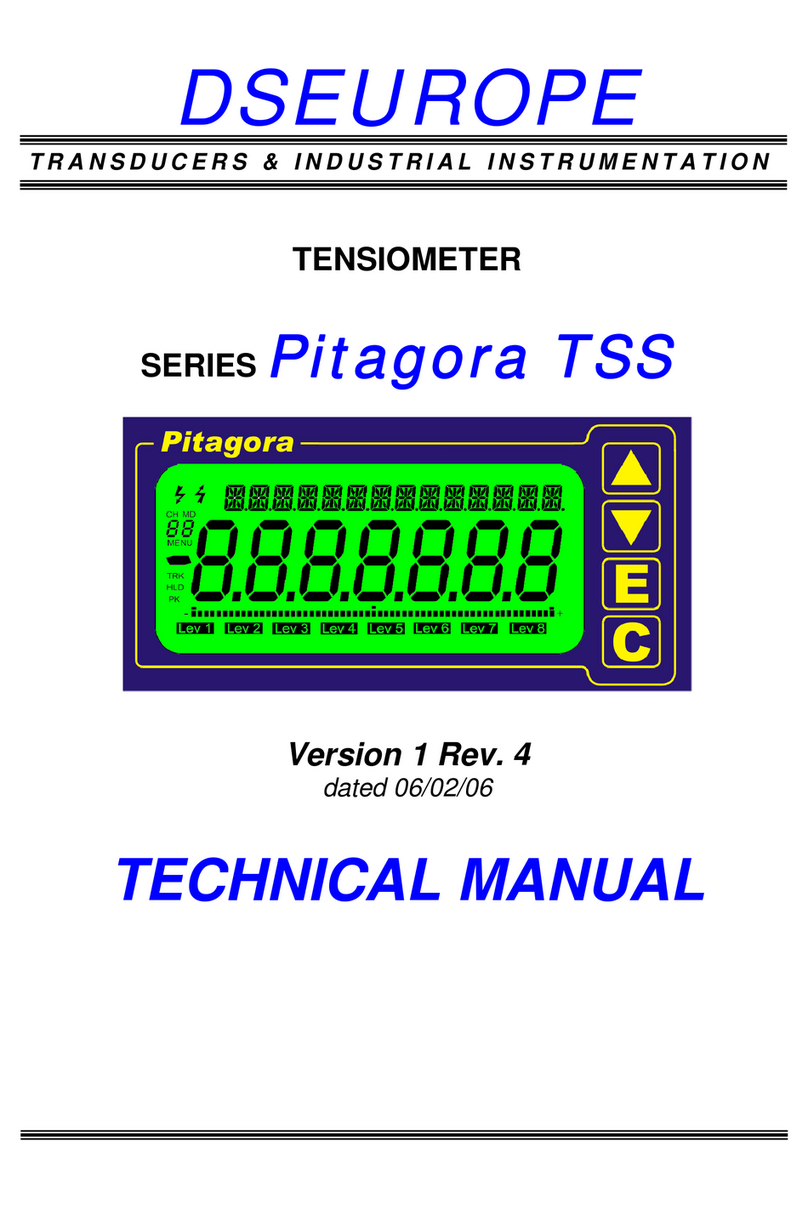
9
5) CAUTIONS FOR INSTALLATION AND USE OF LOAD CELLS
5.1 PRELIMINARY REMARKS:
Have to be avoided risks of damages to Persons and things and damages due to the stopping
of machineries and of plants.
For risky uses, during the negotiations or before the installation of the cell or when known, it
is obligatory for the Purchaser and for the User to supply this information so that DS Europe
can renounce to the order and to the delivery of the goods or to give, under the full
responsibility of the User, instructions to reduce or to cancel the risks.
Note: This chapter is referred mainly to high load (= FS) cells.
5.2 CATEGORIES OF RISKS IN THE USE OF THE CELL:
All the accessories introduced to reduce the risks of the use of a load cell have not to
introduce a "by-pass" to the measuring force; they have to act not over the 50% for the FS (=
full scale); they have to bear overloads at least 10 times the FS of the cell and they
have to apply a symmetric and balanced action in case of operation..
5.2.1 Compression load cells:
The use in compression is usually less risky and, when possible, it is preferable to
convert the tension applications into compression ones.
The accessories for the overload and for the torque protections, etc. are made by
metal blocks complete of distance regulation.
They are low cost components manufactured directly by the Customer.
The free play is regulated for an action around 20% over the FS.
5.2.2 Tension load cells:
The use in tension is usually risky, especially for hanging loads.
They need the best care to avoid damages.
In order of priority for tension applications, can be used the Series AP 7000 (the
most advisable), the Series MD 5000, the series 500QD, the series 560QDT, and last
the Series LT, BC 301 – BC 305 (only for static tension applications).
It is advisable to apply joints between load cell and the machine in order to have a
good alignment between the force vector to be measured and the load cell measuring
axis.
For cells used in tension, two complementary stopping blocks have to be actuated:
Overload protector (= block): on which the cell goes to lay for the measure
deformation when the overload exceeds about 20% over the FS (= full scale).
It has to be robust, stiff and in position to bear at least 10 times the FS.
Usually it has a play adjustment so to act when the overload reaches the 20% over
the FS.
Block in case of rupture of the cell: this is made by chains, flexible metal cables,
etc., usually in a group of 2-3-4 symmetrical pieces.
Note: even when the internal parts of the transducers include overload-protections,
in case of danger, external overload protectors must be applied.





























